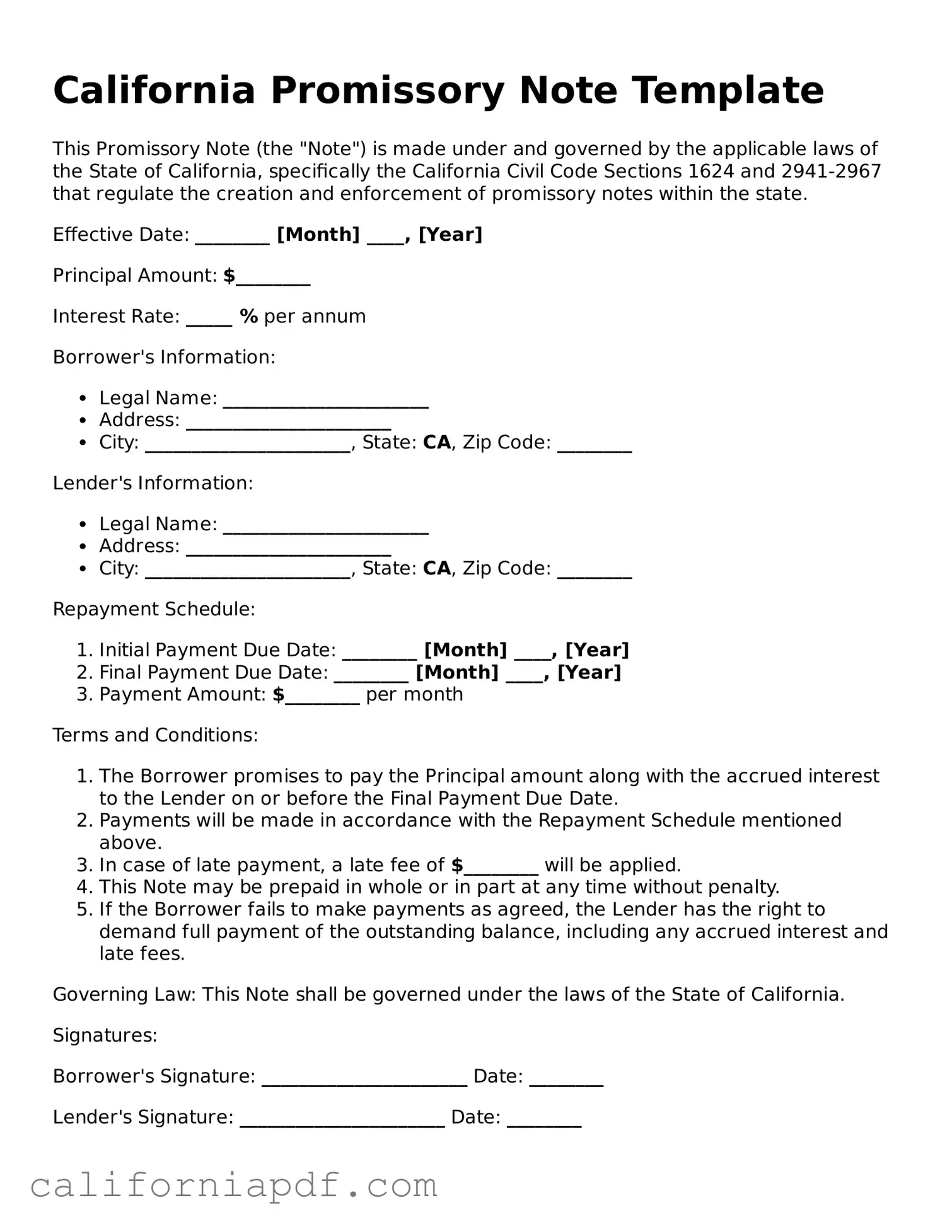California Promissory Note Template
This Promissory Note (the "Note") is made under and governed by the applicable laws of the State of California, specifically the California Civil Code Sections 1624 and 2941-2967 that regulate the creation and enforcement of promissory notes within the state.
Effective Date: ________ [Month] ____, [Year]
Principal Amount: $________
Interest Rate: _____ % per annum
Borrower's Information:
- Legal Name: ______________________
- Address: ______________________
- City: ______________________, State: CA, Zip Code: ________
Lender's Information:
- Legal Name: ______________________
- Address: ______________________
- City: ______________________, State: CA, Zip Code: ________
Repayment Schedule:
- Initial Payment Due Date: ________ [Month] ____, [Year]
- Final Payment Due Date: ________ [Month] ____, [Year]
- Payment Amount: $________ per month
Terms and Conditions:
- The Borrower promises to pay the Principal amount along with the accrued interest to the Lender on or before the Final Payment Due Date.
- Payments will be made in accordance with the Repayment Schedule mentioned above.
- In case of late payment, a late fee of $________ will be applied.
- This Note may be prepaid in whole or in part at any time without penalty.
- If the Borrower fails to make payments as agreed, the Lender has the right to demand full payment of the outstanding balance, including any accrued interest and late fees.
Governing Law: This Note shall be governed under the laws of the State of California.
Signatures:
Borrower's Signature: ______________________ Date: ________
Lender's Signature: ______________________ Date: ________
